Ancient City Of Laodicea With One Of ‘Seven Churches Of Asia’ Founded By The King Antiochus II
A. Sutherland - AncientPages.com - The seventh and final letter to the churches of ancient Asia Minor is to the church in Laodicea, a significant hub of Christianity. Ancient city of Laodicea contained one of the Seven churches of Asia mentioned in the Book of Revelation.
The biblical Laodicea was designated "Laodicea on the Lycus" (Laodicea ad Lycum).
It was founded by the Seleucid king Antiochus II, a king of the Hellenistic Seleucid Kingdom who reigned 261 BC–246 BC) and named for his wife Laodice about 260 BC. The city had a beautiful location in the middle of the Lycus Valley and between Colossae (nine miles to the southeast) and Hierapolis (six miles to the north) - both cities mentioned in Paul's letter to the Colossians.
He rebuilt the city and populated it with Syrians and Jews who migrated from Babylonia.
Laodicea was a wealthy, dynamic city in the province of Phrygia in the Lycos Valley, located together with Hierapolis and Colossae in the Lycus River Valley.
The Laodicean Church in the ancient city of Laodicea, known as "one of the "Seven Churches of Asia" and mentioned in the Bible, is nearly a 1,700-year-old unique structure, which survived despite the city's total collapse due to an earthquake in the 7th century AD.
Laodicea is mentioned several times in the New Testament, in both Paul's letter to the Colossians (2:1, 4:13–16) and the Book of Revelation, in which it is one of the seven churches in Asia [Minor] to receive the message revealed to John that the "time is near" (Revelation 1:3, 11, 3:14–22).
 The early church at Laodicea. Photo: Dr. Celal Simsek from Pamukkale University/Laodikeia excavation.
The early church at Laodicea. Photo: Dr. Celal Simsek from Pamukkale University/Laodikeia excavation.
The apostle Paul makes at least four references to the city in his epistle to the Colossians. Interestingly, he references the town though he had never visited it.
1. Now I want you to understand what great concern I have for you, and for those in Laodicea and as many as have not seen my face in the flesh (Col. 2:1)
2. For I bear witness to him (Epaphras, a preacher who was pivotal in the conversion of many people in Colossae) that he has much zeal for you, those in Laodicea, and those in Hierapolis (4:13).
3. 15 Give our best wishes to the believers in Laodicea, Nympha, and the church that meets in her house.
The archaeological site of Laodicea. The photo shows the Central Baths. Credit: A.Savin - Free Art License
4. 16 After you read this letter, ensure it is also read in the church at Laodicea. At the same time, you are to read the letter the believers in Laodicea will send you. (4:15, TEV)
Paul's letter suggests that Laodicea had a very early Christian community with close ties to the one in Colossus (11 mi away), possibly having been evangelized by Paul's disciple Epaphras, who is mentioned by name in the epistle.
Laodicea, located at the junction of several important trade routes, is 77 kilometers (48 miles) from Philadelphia (Alasehir) and 155 kilometers (96 miles) from Ephesus.
Laodicea – one of Asia Minor's most flourishing cities – was built upon seven hills. The city minted coinage and some inscriptions showing evidence of the worship of the pagan deity Zeus and the emperors.
According to first-century Greek historian Strabo, Laodicea was also home to a well-known medical school. At the same time, this wealthy town was known as a strategic banking center.
Wealth was used to pay for the city's reconstruction after a devastating earthquake in 60 AD, rejecting offers of financial aid from Rome.
Laodicea was the most prosperous city in the region, surrounded by other wealthy cities. Its architecture and impressive and massive buildings decorated the city. Laodicea had not only one theater (as in all other cities) but even two. It also had a large stadium that could accommodate up to 60,000 people. The city had four agoras (marketplaces) with space for more than 4,500 shops.
The city was also associated with the textile industry focusing on black sheep wool production.
It was also known for its famous medical school researching eye diseases and producing the so-called "Phrygian powder" for treating eye diseases.
Remains from the Hellenistic and Roman periods include:
- Two theaters.
- A stadium and a nymphaeum.
- A monumental fountain that continued in use into the Byzantine period (fourth–seventh centuries) when it was walled off and converted into a Christian structure.
The city often suffered from earthquakes. It was destroyed when an earthquake occurred during the reign of Emperor Nero. The inhabitants of Laodicea declined Roman assistance to rebuild the city and instead used their own money to rebuild the town quickly.
At the end of January 2011, a large, well-preserved church was found at Laodicea using ground-penetrating radar. According to excavation director, Celal Simsek of Pamukkale University, the church was built during the reign of Constantine (306–337) and destroyed by an earthquake in the early seventh century. There are 11 apses—one facing east and five each on the northern and southern sides.
Floral and geometric mosaics, as well as opus sectile pavement, cover the floors. The cross-shaped marble baptistery, located at the end of a long corridor on the north side of the church, is one of the oldest and best-preserved ever discovered.
Written by – A. Sutherland AncientPages.com Senior Staff Writer
Updated on July 17, 2023
Copyright © AncientPages.com All rights reserved. This material may not be published, broadcast, rewritten or redistributed in whole or part without the express written permission of AncientPages.com
Expand for referencesReferences:
Rick Renner, Christ's Message to Laodicea Study Guide
Pastor Andy Thomas, The Rise of Laodicea
More From Ancient Pages
-
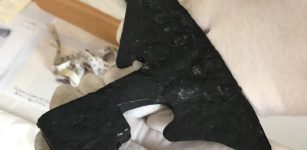 Secrets Of An Unusual And Mysterious Medieval Danish Axe Revealed By Scientist
Archaeology | Nov 25, 2022
Secrets Of An Unusual And Mysterious Medieval Danish Axe Revealed By Scientist
Archaeology | Nov 25, 2022 -
 Catequil – Inca God Of Thunder And Lightning Who Predicted The Future And Was Cultural Hero Of Inca People
Featured Stories | Nov 11, 2023
Catequil – Inca God Of Thunder And Lightning Who Predicted The Future And Was Cultural Hero Of Inca People
Featured Stories | Nov 11, 2023 -
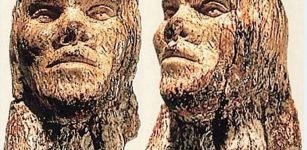 Incredible Mammoth Ivory Male Head From Dolni Vestonice, Czech Dated To 26,000 BC
Artifacts | Jun 23, 2015
Incredible Mammoth Ivory Male Head From Dolni Vestonice, Czech Dated To 26,000 BC
Artifacts | Jun 23, 2015 -
 Power Of Water In Beliefs Of Ancient Cultures
Featured Stories | Apr 9, 2019
Power Of Water In Beliefs Of Ancient Cultures
Featured Stories | Apr 9, 2019 -
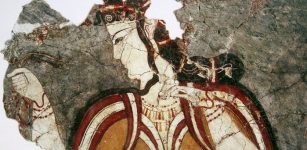 Genetic Mystery Solved: Ancient DNA Reveals Greeks Descended From The Minoans And The Mycenaeans
Archaeology | Aug 4, 2017
Genetic Mystery Solved: Ancient DNA Reveals Greeks Descended From The Minoans And The Mycenaeans
Archaeology | Aug 4, 2017 -
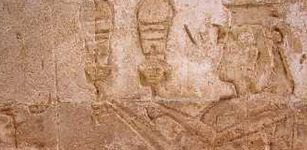 Female Pharaoh Twosret Was Exploited, Used And Almost Erased From History
Featured Stories | Apr 11, 2019
Female Pharaoh Twosret Was Exploited, Used And Almost Erased From History
Featured Stories | Apr 11, 2019 -
 Copyright Violations By Earth-Chronicles.com – Fake Site That Steals Content From Ancient Pages Daily
News | Dec 28, 2017
Copyright Violations By Earth-Chronicles.com – Fake Site That Steals Content From Ancient Pages Daily
News | Dec 28, 2017 -
 Fascinating Discovery – First Female Viking Grave Discovered In Swedish Mountains
Archaeology | Aug 20, 2022
Fascinating Discovery – First Female Viking Grave Discovered In Swedish Mountains
Archaeology | Aug 20, 2022 -
 Effects Of The Volcanic Eruption In Alaska Rippled Through Ancient Egypt During Cleopatra’s Reign
Archaeology | Jul 26, 2022
Effects Of The Volcanic Eruption In Alaska Rippled Through Ancient Egypt During Cleopatra’s Reign
Archaeology | Jul 26, 2022 -
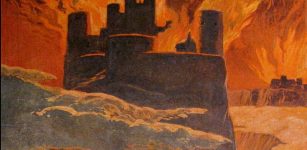 Ragnarok In Norse Mythology – The Doom Of The Gods And Apocalyptic Record Of The Coming Comet
Featured Stories | Jun 30, 2014
Ragnarok In Norse Mythology – The Doom Of The Gods And Apocalyptic Record Of The Coming Comet
Featured Stories | Jun 30, 2014 -
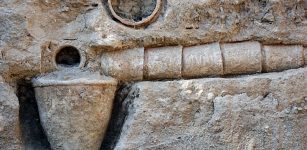 Ancient Aqueduct System Discovered In Boroujerd, Lorestan
News | Sep 16, 2015
Ancient Aqueduct System Discovered In Boroujerd, Lorestan
News | Sep 16, 2015 -
 Secrets Of Mount Shasta – One Of The Most Sacred Places On Earth
Civilizations | Oct 24, 2015
Secrets Of Mount Shasta – One Of The Most Sacred Places On Earth
Civilizations | Oct 24, 2015 -
 On This Day In History: Battle of Stirling Bridge Took Place – On Sep 11, 1297
News | Sep 11, 2017
On This Day In History: Battle of Stirling Bridge Took Place – On Sep 11, 1297
News | Sep 11, 2017 -
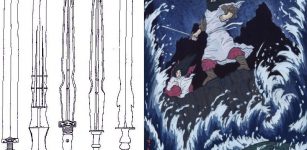 Sacred Regalia Of Japanese Emperor: Sword, Mirror And Jewel In Ancient Japanese Tradition
Artifacts | Sep 2, 2017
Sacred Regalia Of Japanese Emperor: Sword, Mirror And Jewel In Ancient Japanese Tradition
Artifacts | Sep 2, 2017 -
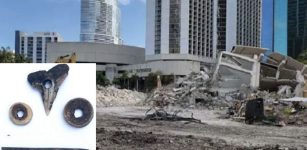 Major Archaeological Discovery Of A 7,000-Year-Old Settlement In Miami – But Its Future Is In Danger
Archaeology | Feb 10, 2023
Major Archaeological Discovery Of A 7,000-Year-Old Settlement In Miami – But Its Future Is In Danger
Archaeology | Feb 10, 2023 -
 Encounter With Time Window At The Upper Current River And Curious Glimpses From The Past
Featured Stories | Jul 28, 2018
Encounter With Time Window At The Upper Current River And Curious Glimpses From The Past
Featured Stories | Jul 28, 2018 -
 2000-Year-Old Antikythera Mechanism – Experts Recreate A Mechanical Cosmos For The World’s First Computer
Ancient Technology | Mar 15, 2021
2000-Year-Old Antikythera Mechanism – Experts Recreate A Mechanical Cosmos For The World’s First Computer
Ancient Technology | Mar 15, 2021 -
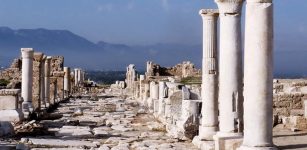 1,900-year-old ‘water law’ unearthed in Laodicea
Civilizations | Aug 26, 2015
1,900-year-old ‘water law’ unearthed in Laodicea
Civilizations | Aug 26, 2015 -
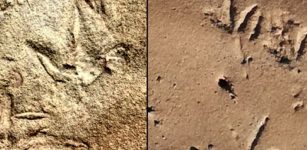 290-Million-Year-Old Bird-Like Footprints Left By Unknown Animals Found In Africa
Fossils | Nov 30, 2023
290-Million-Year-Old Bird-Like Footprints Left By Unknown Animals Found In Africa
Fossils | Nov 30, 2023 -
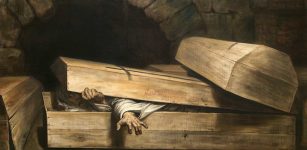 Older Than Dracula: In Search Of The English Vampire
Myths & Legends | Dec 9, 2022
Older Than Dracula: In Search Of The English Vampire
Myths & Legends | Dec 9, 2022


